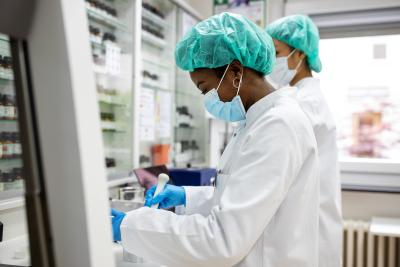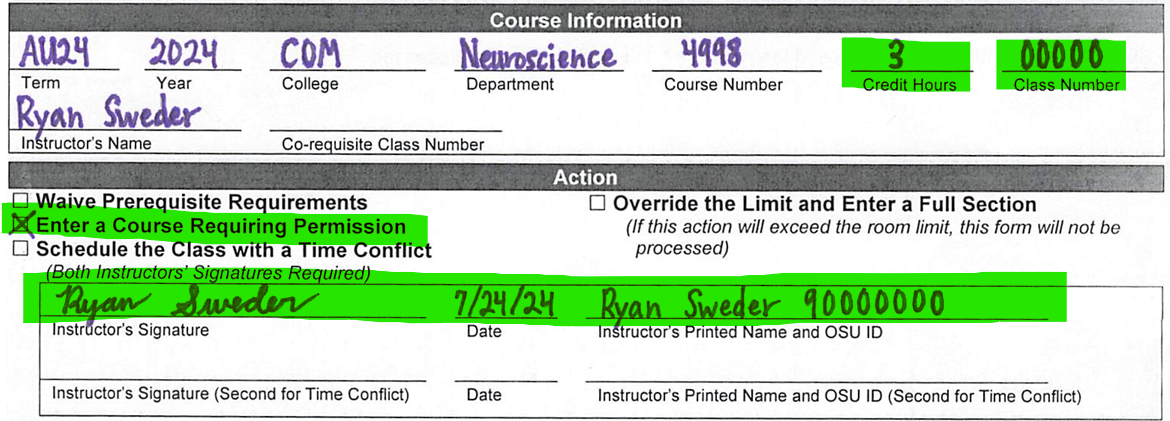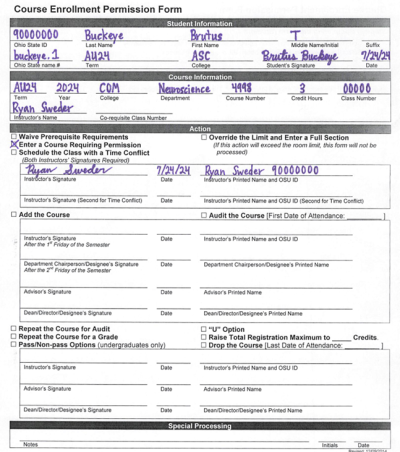Research: Undergraduate Information

Many Neuroscience students choose to gain research experience during their undergraduate time at Ohio State. Below, you can find additional information regarding how to find research opportunities, how to enroll in 4998 research credit, and thesis information.
If you are working with a Neuroscience Faculty Member, 3 credit hours of Neuro 4998 can be used toward a requirement within the Neuroscience Major.
If you have any additional questions regarding the information below, you can reach out to our office via email at neuroadvising@osu.edu
How to Find Research Opportunities | How to Enroll in 4998 Research Credit | Thesis Information
How to Find Research Opportunities
What are your interests, goals, skills, and availability?
- Have you successfully completed the necessary pre-requisite coursework (Psych 3313 and Neuro 3000)?
- Do you have time to devote to research this term?
- Can you afford time away from studying for your other classes?
- Can you commit to more than one term? Many professors want a student who plans to stay in the lab for multiple terms, since it can take a while for you to get trained on things you need to know.
- In what area of research are you interested? How will your research apply to your future career goals?
- Do you have any of your own research ideas? Are there professors at Ohio State that are researching something similar to your ideas?
- What sort of skills do you already have? What laboratory courses have you taken? Which advanced courses in your major have you completed?
How do I find a research project?

- Explore the research interests of neuroscience faculty at OSU using our people directory and the Neuroscience Graduate Studies Program website
- Talk to your professors after class or during office hours to see if they have any openings
- Contact an advisor to discuss opportunities
- Look at departmental postings in related areas such as Psychology or Molecular Genetics (note that many postings on these pages are not neuroscience-related and, therefore, may not be eligible for major/minor credit).
What is the best way to contact a professor with whom I'm interested in working?
Contacting a professor can be intimidating but remember that all researchers started out as novice undergraduates, just like you!
- Do your homework before contacting professors! You should know about what kind of research a lab does and whether or not they have published recently. Searching Google for information can be helpful as many professors have webpages. PubMed is the database for research publications, so you can read up on specific research a professor has done.
- If you're hoping to talk to a professor right after class or during office hours, be aware that many professors have busy schedules, so try to keep it brief. You can always follow up via a well-crafted e-mail. Talking to TAs (who are usually graduate students in a professor's lab) can be just as useful since the graduate students are usually the ones who need the hands-on assistance in the lab and they may have a role in hiring undergrads.
- When you send an e-mail, it should be concise but not overly brief. Professors are busy and will ignore e-mails that have too little information and will be too busy to read an e-mail with too much information. Your first e-mail should indicate basic understanding of the faculty member's research area or a specific project, your reasons for interest in such research, your skills and qualifications and/or willingness to learn, your time commitment availability, and a request to meet to discuss potential opportunities.
- Prepare a resume. Some professors will not ask for one but many will want to see your past work/volunteer experience as well as any technical skills that you may have (e.g. pipetting, basic lab safety, animal handling, data analysis, etc.). It is best to have one prepared in case they ask for it.
- Professors want students who are genuinely interested in their research. Avoid contacting faculty about positions unless you think that you will be happy working in their lab.
[pdf] - Some links on this page are to Adobe .pdf files requiring the use of Adobe Reader. If you need these files in a more accessible format, please contact neuroadvising@osu.edu.
How to Enroll in 4998 Research Credit
Once you have accepted a position in a Faculty Member’s Laboratory, you can earn course credit(4998) for your participation in the lab to count toward the Neuroscience Major.

If you would like this experience to count toward the Neuroscience Major, you will need to complete a total of 3 credit hours of 4998. This can be done in 1 or multiple semesters. It is important to work with your PI to complete a course enrollment form. Make sure to submit this as soon as possible, but before the 2nd week of the semester that you plan to enroll in the credit. It is important that this form is completed and includes the class number that only your PI knows. If they do not have a class number created, they will need to contact the course scheduler for their department to create one.
The general rule thumb is for every 3-4 hours per week you are in the lab is equivalent to 1 credit hour.
Below, you find step by step instructions, common questions, and how to find research.
Getting Enrolled in Undergraduate Research Credit
Download an OSU course enrollment permission form found on the registrar’s website.
- Fill out the top section of the sheet, as shown below, with your student information.
- For all Neuroscience Majors your college will be Arts and Sciences (ASC).
- Your Ohio State ID is the nine digit number found on your BuckID.

- Before moving on to Step 2, ensure all lines have their appropriate information.
- Suffix can be left blank in most cases.
The next section of the form is “Course Information and Action."
- There is less for you to fill out on this section; you will not be filling out any lines highlighted in green shown below.
- Your PI/Faculty member is exclusively responsible for entering in the credit hours, the class number, and the signature on the form as well as checking off “Entering a course requiring permission” as the action.
- Credit hours can be discussed with your PI/Faculty member to ensure your have agreed upon expectations for the amount of time you will be allocating for doing lab work. See "Common Questions," at the bottom of the page for more information about determining an appropriate number of credit hours.

Once completed, your form should look like this:

You can then drop off your completed form to the Neuro Advising Office *no appointment necessary, email an electronic copy to neuroadvising@osu.edu or email it directly to your Neuroscience Advisor.
Your advisor will then enroll you in the class.
Common Questions
As a student working in a research laboratory, you should receive course credit or payment for your time in the lab.
- Most students will receive 1 credit hour for each 3 hours of work completed in the lab for the entire semester. On average, our students receive 3 credit hours of research for 9 hours spent in the lab each week for the entire semester. We recommend that you discuss this topic with your PI/professor to decide on an appropriate number of credits.
As an undergraduate research assistant, you may:
- Gain hands-on experience in exploring the latest discoveries in your lab's respective discipline.
- Use research as a way to prepare for graduate or professional school or learn skills for the workforce.
- Connect with faculty, researchers, graduate students, and/or other undergraduates who share similar academic and career interests. Developing these connections may also help you strong reference letters.
- Apply what you have learned in the classroom to real-world problems.
- Your PI/Faculty will have a CLASS NUMBER for their 4998 research course. The CLASS NUMBER is found in their "Faculty Center." It is the 4 or 5 digit number located in parentheses. Make sure to work with your PI/Faculty to get this number for the Course Enrollment Form.
